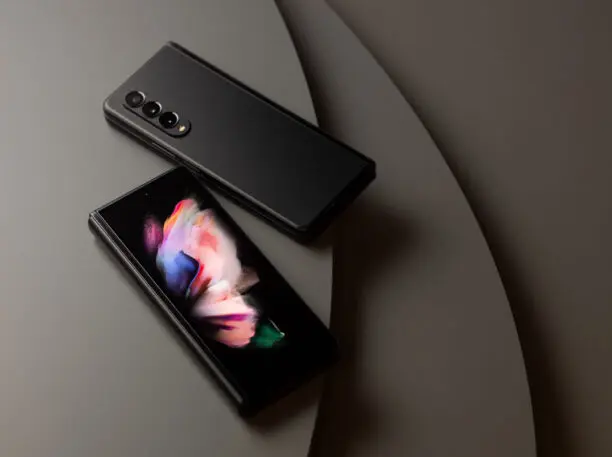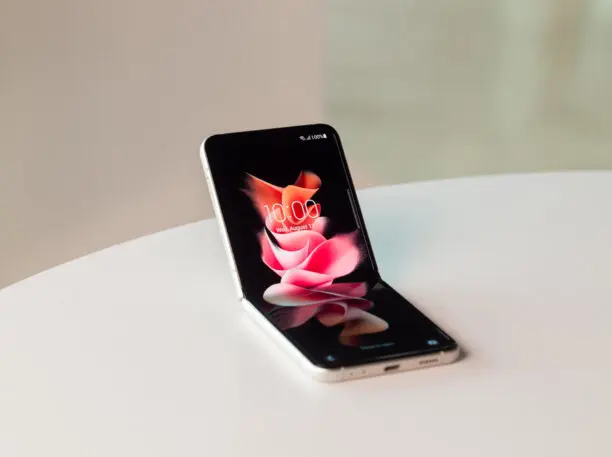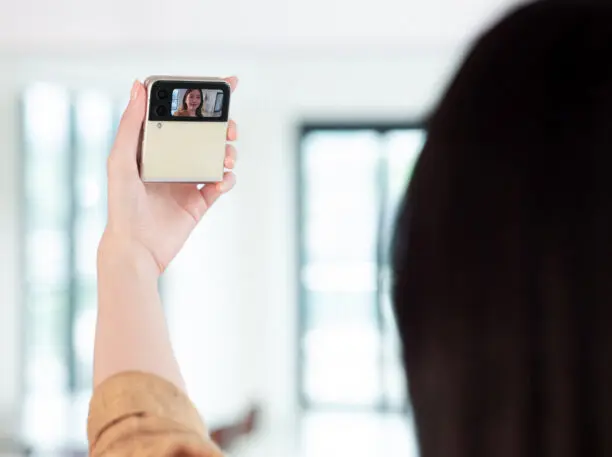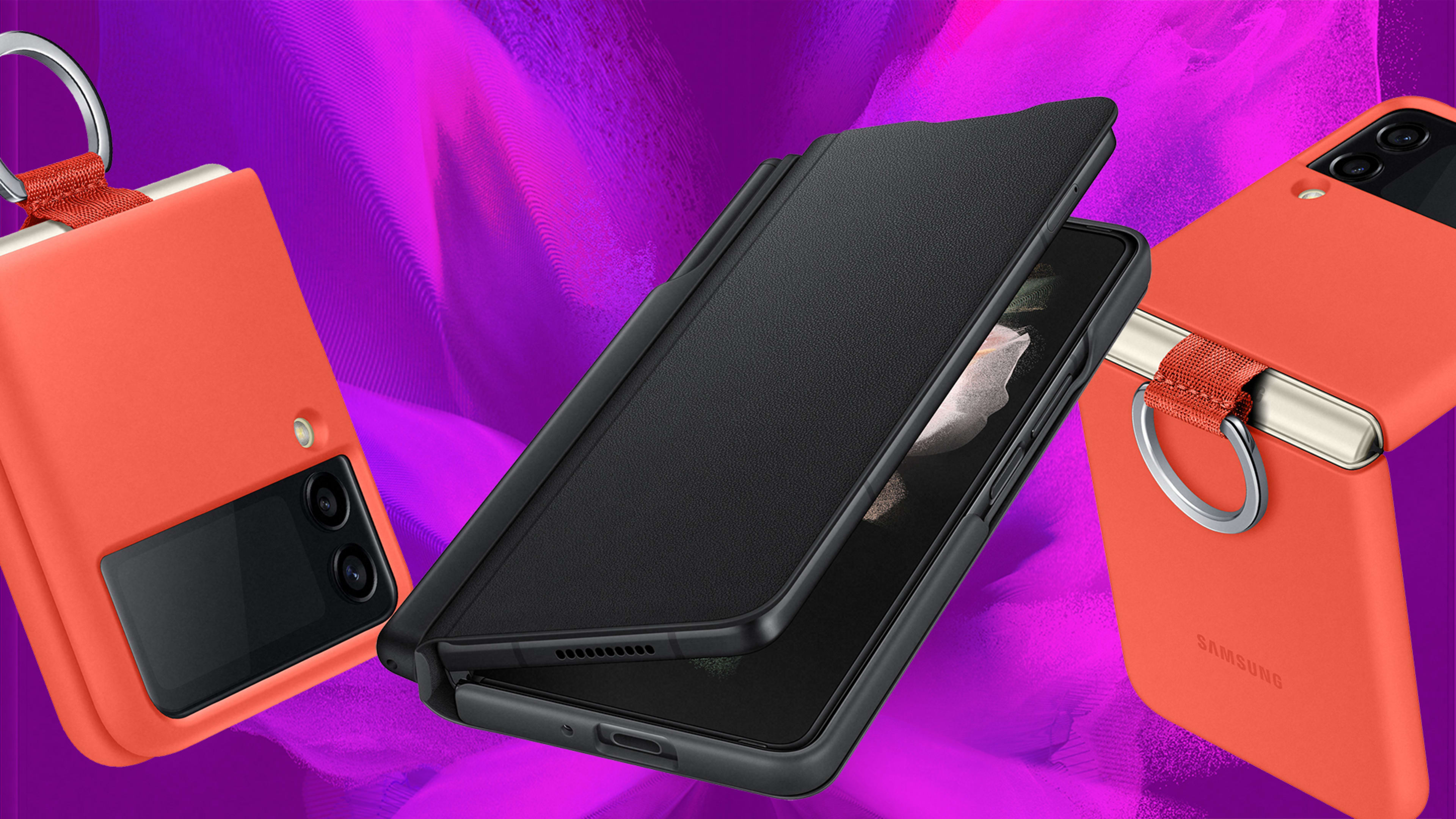For the past couple years, foldable phones have catered mainly to bleeding edge techies, and Samsung seemed to know it.
The original Galaxy Fold was little more than a prototype, one that broke in the hands of several reviewers. Last year’s Z Fold2 and Z Flip were more durable, but they were still expensive curiosities, priced at $1,999 and $1,449 respectively.
The third time around, Samsung believes its new foldable phones are ready for the mainstream. The larger Z Fold3 5G is still pricey at $1,800, but Samsung says it has a screen that’s 80% more durable, a stronger aluminum hinge, and IPX8 waterproofing. The smaller Z Flip 3, meanwhile, is much cheaper than last year’s model at $1,000, putting it in the same price range as Apple’s iPhones Pro.


Refined design
The Galaxy Z Fold3 has the same basic foldable design as last year’s model, with a 6.2-inch screen on the outside and a tablet-sized 7.6-inch screen that folds out from the inside. But Samsung is using a new material for the inner screen’s protective cover—PET (polyethylene terephthalate), instead of TEP (thermally enhanced plastic)—that Hawke says is more flexible and stretchable, and the company has made some optimizations to its inner display panel to make it more durable as well.

The Fold3 is also Samsung’s first phone with a front camera that blends in under the display, so there’s no hole punch cutout for the lens anymore. While the camera only supports 4-megapixel photos, Hawke says it’s intended more for video calls on the larger screen. (The outer display has its own 10-megapixel camera for selfies.)
Samsung made some refinements to the software as well: Users can switch between apps through a persistent taskbar on the side of the screen, and for apps that aren’t optimized for foldable devices, there’s a “Labs” feature where users can customize the layout.

The Z Flip3 has the same durability improvements as its larger sibling, and it has a larger 1.9-inch outer screen for glancing at notifications. But the biggest change has to do with the price. While $1,000 is still a lot to ask for a smartphone, it’s the same price as Apple’s iPhone 12 Pro and Samsung’s Galaxy S21+.

No more Notes (for now)
Samsung’s latest foldable phone launch is also momentous for another reason: It’s the end of the line for Samsung’s Galaxy Note range, at least as the pinnacle of the company’s flagship phone efforts.
The company hasn’t been particularly clear on whether it will making new Notes, which are best known for having a built-in stylus, but for now Samsung seems more interested in bringing optional stylus support to its existing flagships. For the Z Fold3, Samsung will sell two types of S Pens, including a smaller style that fits into an optional case and a larger stylus with Bluetooth for remote-control features.
Longtime Note fans may be peeved, but on some level Samsung is just passing the torch. Tech pundits mocked the original Galaxy Note for its 5.3-inch screen, which seemed absurdly large at the time (for the record, I liked it), but Samsung persisted in proving that bigger screens are better, while the stylus was always a sideshow. Now that the Note’s job is done, it’s stepping aside to make room for an even bigger leap.
The Note originally rose to prominence on the strength of Samsung’s marketing, which included a Super Bowl ad full of envious iPhone owners. Samsung’s Hawke says to expect TV ads and billboards for its new foldables, and both the Z Fold3 and Z Flip3 have the support of major U.S. wireless carriers, whose monthly installment plans might help obscure the phones’ otherwise high sticker prices.
“This is our flagship portfolio for the second half of these year, and you’ll see the full force of Samsung’s marketing vehicles behind these going into the second half,” Hawke says.
Samsung won’t be alone in pushing foldable phones to the masses. Rumor has it that the company will offer its foldable display tech to other phone makers, most notably Google, and budget phone maker TCL has teased a variety of foldable phone concepts that might eventually become real products. Motorola has resurrected its iconic Razr brand with a foldable design similar to Samsung’s Z Flip, though it’s unclear if the company’s making new ones. Apple has reportedly been working on a foldable iPhone for 2023, also with Samsung as a display supplier.
But in the meantime, Samsung stands the biggest chance of getting the idea to stick.
Recognize your brand’s excellence by applying to this year’s Brands That Matter Awards before the early-rate deadline, May 3.
